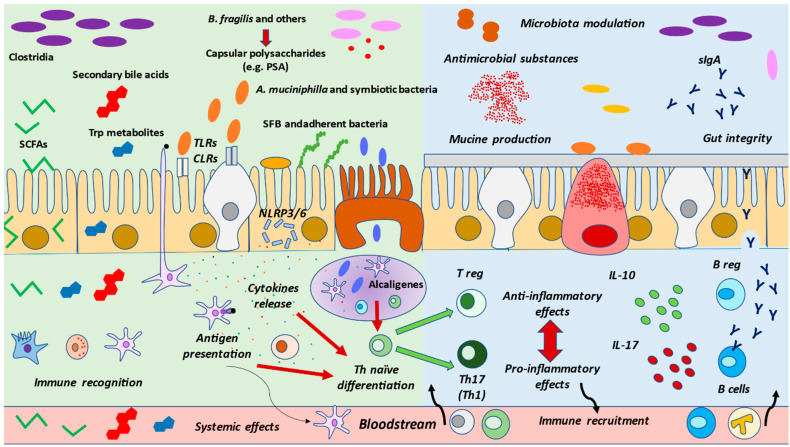Figure 2.
Interactions between gut microbiota and immune system. The presence of healthy gut microbiota, their products and metabolites are detected by the different cells located in the gut mucosa. DCs may up-take antigens and present them, as previously commented on, at the Peyer’s patch or mesenteric node, leading to Th naïve differentiation. Certain bacteria such as Alcaligenes may be found in the Peyer’s patch that equally regulate Th fate. Finally, some other bacteria may adhere to the epithelium, promoting the release of cytokines to modulate the immune response. These recognitions are mainly due to Toll-like receptors or Nod-like receptors, leading to inflammasome NLRP3/NLRP6 activation. Then, in gut eubiosis, the activated cells will conduct a proper response, which includes increased mucine production by globet cells, an augmentation of tight junctions by enterocytes, and the secretion of antimicrobial substances by Paneth cells or of IgA by B cells. Likewise, the balance between Treg/Th17 and pro-inflammatory and anti-inflammatory cytokines is vital for the regulation of immune responses, collaborating with an adequate, non-exacerbated response, but also with tolerance. Importantly, under pathological conditions, this balance is lost, and an inflammatory environment is created, contributing to the normal functioning of these cells, along with the associated gut dysbiosis.

